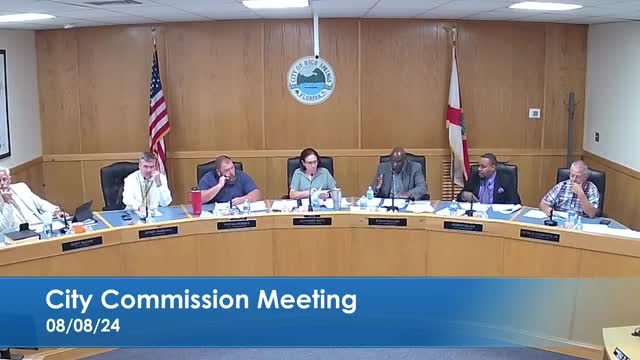Fire Department Faces Mold Crisis and Safety Concerns
August 09, 2024 | High Springs, Alachua County, Florida
This article was created by AI summarizing key points discussed. AI makes mistakes, so for full details and context, please refer to the video of the full meeting. Please report any errors so we can fix them. Report an error »

During a recent government meeting, officials addressed pressing concerns regarding the capacity limits of a community facility and significant mold issues at the High Springs Fire Department.
The discussion on facility capacity centered around safety concerns related to overcrowding. Current regulations allow for a maximum of 67 occupants, but there was a proposal to increase this limit to 98. However, several commissioners expressed apprehension about the safety implications of such a high occupancy, particularly in emergency situations. After deliberation, a consensus was reached to set the new capacity at 75, with the stipulation that any rental agreement must include a floor plan for approval to ensure safety.
The more critical issue discussed was the mold contamination at the fire department. Following the discovery of mold in the bunk room and women's restroom, officials reported high humidity levels exceeding 80%, which contributed to the mold growth. A mechanical contractor's assessment indicated that the air conditioning system had been improperly installed, leading to inadequate air exchange and moisture buildup. The situation was exacerbated by a malfunctioning exhaust fan in the women's restroom, resulting in the presence of black mold, which necessitated immediate remediation.
The estimated cost for addressing the mold issue and overhauling the air conditioning system is approximately $190,052, excluding reconstruction costs. Officials emphasized the urgency of the situation, citing the health risks posed to firefighters who have been temporarily relocated to less-than-ideal sleeping arrangements within the station.
Commissioners discussed potential funding sources, including the American Rescue Plan Act (ARPA) funds, to cover the remediation and repair costs. They also considered the possibility of pursuing legal action against the original contractors responsible for the faulty installation, although the primary focus remained on ensuring the safety and well-being of the firefighters.
The meeting concluded with a commitment to move forward with the necessary remediation efforts while exploring all avenues for accountability regarding the original installation of the HVAC system.
The discussion on facility capacity centered around safety concerns related to overcrowding. Current regulations allow for a maximum of 67 occupants, but there was a proposal to increase this limit to 98. However, several commissioners expressed apprehension about the safety implications of such a high occupancy, particularly in emergency situations. After deliberation, a consensus was reached to set the new capacity at 75, with the stipulation that any rental agreement must include a floor plan for approval to ensure safety.
The more critical issue discussed was the mold contamination at the fire department. Following the discovery of mold in the bunk room and women's restroom, officials reported high humidity levels exceeding 80%, which contributed to the mold growth. A mechanical contractor's assessment indicated that the air conditioning system had been improperly installed, leading to inadequate air exchange and moisture buildup. The situation was exacerbated by a malfunctioning exhaust fan in the women's restroom, resulting in the presence of black mold, which necessitated immediate remediation.
The estimated cost for addressing the mold issue and overhauling the air conditioning system is approximately $190,052, excluding reconstruction costs. Officials emphasized the urgency of the situation, citing the health risks posed to firefighters who have been temporarily relocated to less-than-ideal sleeping arrangements within the station.
Commissioners discussed potential funding sources, including the American Rescue Plan Act (ARPA) funds, to cover the remediation and repair costs. They also considered the possibility of pursuing legal action against the original contractors responsible for the faulty installation, although the primary focus remained on ensuring the safety and well-being of the firefighters.
The meeting concluded with a commitment to move forward with the necessary remediation efforts while exploring all avenues for accountability regarding the original installation of the HVAC system.
View full meeting
This article is based on a recent meeting—watch the full video and explore the complete transcript for deeper insights into the discussion.
View full meeting